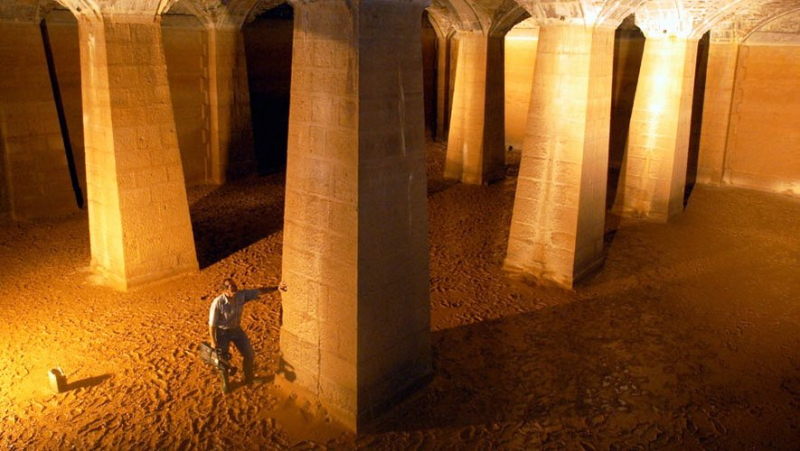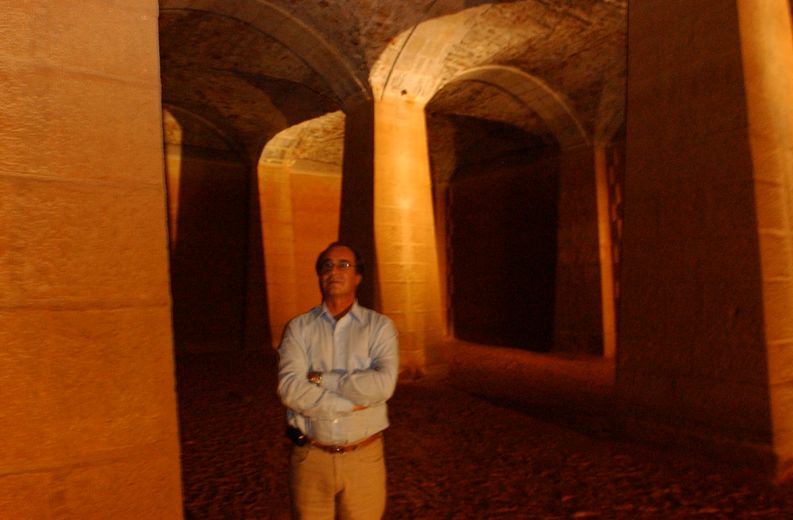Capturing runoff water and limiting the risks of pollution: towards a new life for the Sète water tower

With a surface area of approximately 500 m², the Château d'eau reservoir was used to distribute water in Sète from 1863. It is now dry. Archive Midi Libre – Midi Libre
The Agglo de Sète plans to create a buffer reservoir by the end of 2024 in order to trap runoff water, manage overflow and thus limit, downstream, the risks of pollution in the canal and the Thau pond.
The project, it is fair to say, is in the pipeline. The Sète castle reservoir will be the subject in the coming months of an ambitious environmental project led by Sète Agglopôle.
Used for distribution from 1863, the city's first water reservoir, with a surface area of approximately 500 m², has been empty and unused since its creation of the main Caraussane reservoir (8,000 m3). It is no longer of any use today. By the end of 2024, the idea would be to create a buffer reservoir there in order to trap runoff water and thus limit the risks of pollution downstream, in the event of heavy rain.
Capturing runoff water and managing its diffusion
The old pipe – an immense ovoid which descends nearly 300 meters to Place Aristide-Briand – would be completely reused. "In the old town, we do not have the capacity to separate the unitary sewer network from the rainwater part. When we are in charge, the network ends up overflowing and, if it is contaminated, it can also contaminate the Thau pond. Without being able to have two networks, the only way would be to send the excess water diffusely, thanks to the buffer tank, once the rainy episode is over. ;quot;, explains community advisor Vincent Sabatier.

François Commeinhes, mayor of Sète, during a visit to the cave and the cistern of the water tower, in 2004. Archive Midi Libre – JEAN NOEL CERTHOUX
During Cévennes episodes and heavy rains, the reuse of the water tower reservoir would therefore make it possible to capture runoff water to gradually diffuse it into the unitary water network. #39;sanitation. "The pipes are not sufficient, currently, during periods of heavy rain and the mixture of wastewater and rainwater therefore leaves in the channel in this case, recalls Patrick Réamot, the general manager responsible for the environment at Sète Agglopôle. The reuse of the water tower will make it possible to trap runoff water in the reservoir before # 39;they do not descend and rejoin the unitary network, avoiding its saturation."
In the sense of the shellfish claims
In the Agglo's approach, there is the concern, apart from the exceptional rain episode, that the discharges into the canal do not end up in the canal. pond, harming shellfish farming activity.
The thought will go straight to the heart of an angry profession, whose voluminous list of demands prominently includes "networks of’ truly effective sanitation", as well as'"a disappearance of unitary networks in favor of separative networks".
If it is approved in principle, the project is not yet complete. Its overall cost, in particular, is not quantified. It must be the subject of a substantial subsidy from the Water Agency. The work is expected to begin at the start of the school year in September.
Progressively separated networks
Almost as old as the city, the Sète network is not differentiated and the waters therefore leave in a unitary network which it would be impossible to repeat in the old parts. On the other hand, the community takes advantage of major road projects to create separate water-rainwater networks. This is the case of the projects which concerned or concern the streets Gabriel-Péri and Général-de-Gaulle, the place Aristide-Briand as well as the avenue Victor-Hugo, completely recalibrated to the over the next few months.
I subscribe to read more




